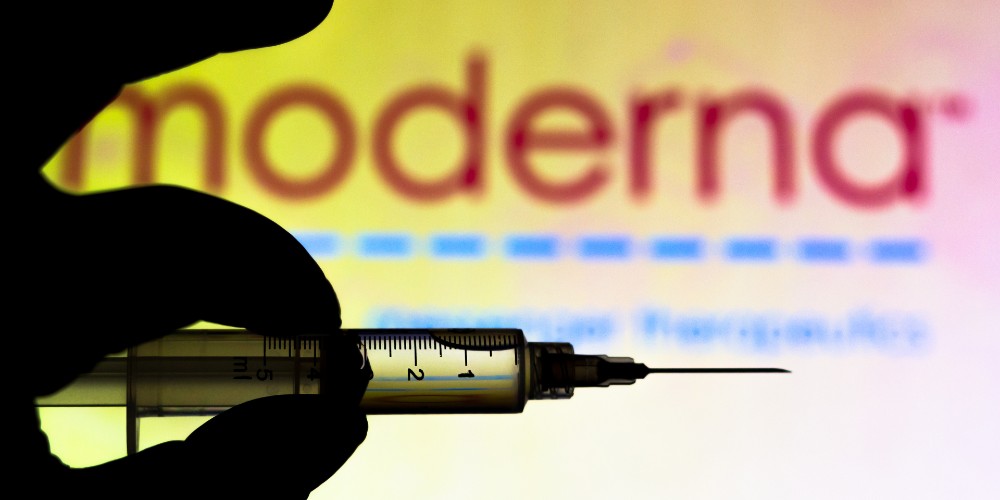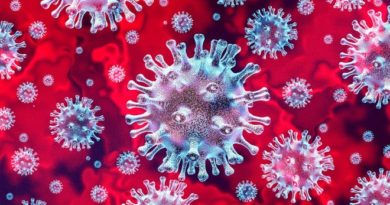HIV mRNA “Vaccines” Continue to Fail in Clinical Trials

Subscribe for free to the America First Report newsletter.
- The most recent mRNA failure was a phase 1 trial of Moderna’s mRNA human immunodeficiency virus (HIV) injection
- Larger trials were halted after a high rate of “puzzling skin side effects” occurred
- In a series of phase 1 trials, 7% to 18% of participants who received the experimental mRNA shots experienced skin reactions, including hives, itchiness or hives caused by scratching
- Skin reactions can be an “early warning radar for general immune response” indicative of a greater problem
- Although all HIV mRNA shots have failed to pass even the initial trials, we’re to believe COVID-19 mRNA shots passed safety and efficacy studies with flying colors and the technology is thereby “proven” safe and effective
(Mercola)—Messenger ribonucleic acid (mRNA) vaccines are being described as a “new era in vaccinology.”1 Research is underway to develop mRNA shots for not only coronaviruses but also C. difficile, hepatitis C, influenza, malaria, norovirus, cancer and more2 — despite the fact that all mRNA shots are likely ineffective and/or dangerous.
The most recent mRNA failure was a phase 1 trial of Moderna’s mRNA human immunodeficiency virus (HIV) injection. Larger trials were halted after a high rate of “puzzling skin side effects” occurred.
Important: Our sponsors at Jase are now offering emergency preparedness subscription medications on top of the long-term storage antibiotics they offer. Use promo code “Rucker10” at checkout!
“We are taking this very seriously,” Carl Dieffenbach, head of the Division of AIDS at the National Institute of Allergy and Infectious Diseases (NIAID), told Science.3 Although all HIV mRNA shots have failed to pass even the initial trials, researchers plan to repeat the phase 1 trial using a lower dose.
High Rates of Skin Reactions Halt HIV mRNA Shot Trials
Trials of mRNA-based HIV immunogens are being conducted in partnership by the International AIDS Vaccine Initiative (IAVI), Moderna, the HIV Vaccine Trials Network (HVTN), the National Institutes of Health (NIH) and the Bill & Melinda Gates Foundation.4
In a series of phase 1 trials, 7% to 18% of participants5 who received the experimental shots experienced skin reactions, including hives, itchiness or hives caused by scratching. In a news release, IAVI largely downplayed the concerning outcome, stating:6
“Most of these events were mild or moderate, and managed with simple allergy medications. There were no serious adverse events reported. Participants who experienced skin events were provided all medical care necessary and were monitored closely.
IAVI and partners are actively working to investigate the potential causes of these skin events. We have brought in an interdisciplinary team of external experts, including allergists and immunologists, to further assess the skin events.
In the interest of transparency and clarity, IAVI and partners have presented preliminary data on immune responses and safety at scientific conferences and look forward to continuing our discussion of these results.”
However, the setback highlights the continued failures in the race to create an mRNA HIV shot. “We would be moving more quickly if this finding had not been observed,” IAVI head Mark Feinberg told Science.7
Problems Plague mRNA HIV Shots
To create the shot, researchers have been injecting “different mRNAs, encoding various pieces of HIV’s surface protein or the entire molecule, over the course of several months.”8 The idea is to trigger the creation of broadly neutralizing antibodies, or bNAbs.
BNAbs are immune system proteins that have the unique ability to fight a wide range of strains of a virus. In terms of HIV, bNAbs are of particular interest because HIV is highly variable, with numerous strains circulating globally. Derek Lowe, a medicinal chemist, wrote:9
“Moderna has been working for some years now on a possible HIV vaccine using their mRNA technology, which is an ambitious goal. There have been numerous attempts at this over the decades, and needless to say none of them have worked out yet. There is almost certainly not going to be a single-shot vaccine targeting a single antigen — the situation is too complex for that.
Since the virus comes in many different strains, the hope has been that some sort of more comprehensive vaccine protocol might be able to induce broadly neutralizing antibodies that could take on all comers.”
Most antibodies target specific virus strains, but bNAbs can neutralize many strains of HIV, making them a powerful tool in the fight against this virus. While people with HIV sometimes develop their own bNAbs, no vaccine has done so.10
The idea in creating bNAbs through mRNA technology for HIV is to deliver instructions for creating proteins that resemble parts of the HIV envelope. This would, in theory, stimulate the immune system to produce bNAbs that can neutralize a wide range of HIV strains, offering a broad protection against the virus. As reported by Bloomberg:11
“Creating an mRNA vaccine for HIV is trickier than making the kind of SARS-CoV-2 shots we’ve become familiar with. The mRNA COVID vaccines deliver the recipe for the spike protein … This causes immune cells to produce neutralizing antibodies against COVID, much as they would do if they had experienced a COVID infection.
With HIV, there’s no such simple recipe. HIV’s equivalent to the spike protein — its envelope glycoprotein — is wilier. It hides its vulnerable aspects, making it difficult for immune cells to generate antibodies against it. An even bigger problem is that HIV starts to mutate within hours of infecting someone …
HIV behaves like ‘a swarm of slightly different viruses’ … People with HIV rarely develop neutralizing antibodies, and in the very few who do, the antibodies take years to evolve — far too long for them to effectively fight the virus. The immune system can’t keep up.
But what if the immune system could be given a head start? That’s the idea behind the Moderna/IAVI vaccine … The researchers will administer a series of shots to try to coax the immune system along that years-long process ahead of time so that when it is exposed to HIV, it can spring into action.”
Skin Problems May Be Early Warning for an Immune Response
While the Moderna HIV shot reportedly generated “impressive antibodies that were moving toward bNAbs,”12 the high rate of skin problems it triggered are suggestive of a greater problem. Lowe went so far as to describe them as an “early warning radar for general immune response”:13
“A significant number of vaccine recipients (ten to fifteen percent in some cases) have shown various sorts of skin reactions (hives, etc.) These almost always resolve, but it is a warning.
Skin reactions are sort of an early warning radar for general immune response (thus the skin tests for various allergens), and the worry is that these might well become worse on further dosing (or be harbingers of other immune problems in different organ systems). It’s definitely worth a closer look.
I have to point out that this side effect rate is much higher than has been seen with the coronavirus mRNA vaccines (thus the alarm bells), but skin reactions are not unknown there, either … No one is quite sure if it’s the mRNA species themselves that set off the response here, or if it’s something about the formulation (the lipid nanoparticles).”
“Potentially more worrisome, however, would be if the problem is tied to a cumulative effect from multiple mRNA shots,” Science reported.14 It’s important to point out that while all HIV mRNA shots have failed, we’re to believe COVID-19 mRNA shots passed safety and efficacy studies with flying colors and the technology is thereby “proven” safe and effective.
But as noted by Canadian oncologist and cancer researcher Dr. William Makis, “The more mRNA shots you take, the greater the immune system damage, the greater your risk of impaired cancer surveillance and hence, the greater your risk of turbo cancer.”15
Turbo cancers is a term used to describe the emergence of rapid-growing cancers in people, many under age 30, who have received one or more COVID jabs — another warning that mRNA shots aren’t as safe as we’ve been led to believe. Makis tweeted:16
“Unfortunately, the entire LNP/mRNA Vaccine field is a fraud. It’s a failed technology with an unacceptably terrible side effect profile. The entire field now depends on the suppression of COVID-19 mRNA Vaccine injuries & deaths, which are now in the millions (5.3 million in WHO VigiAccess alone), so we are no longer dealing with scientists but con artists …
They are trying to find “novel” ways to market a failed technology platform and sneak failed vaccine products onto the market. The Moderna HIV mRNA Vaccine is such a product … And yes, they are moving forward, despite 20% of HIV mRNA Vaccine Victims developing skin rashes in Phase I trials. Moderna will repeat the Phase I trials with a slightly lower dose. The poisonings will continue until vaccine injuries improve.”
All mRNA Shots Likely Ineffective, Dangerous
While the latest HIV mRNA shot trial showed a risk of side effects, others have shown the shots don’t work. One clinical trial conducted by the NIAID-funded HIV Vaccine Clinical Trials Network began in 2019 and involved 3,900 participants. The experimental HIV vaccine regimen used in the study was developed by Janssen, the vaccine division of Johnson & Johnson, and did not provide protection against HIV, leading the study to be discontinued.17
“The vaccine used the same antigen delivery system employed by J&J’s COVID-19 vaccine, a common cold virus known as adenovirus 26,” Stat News reported, and at least five others have also failed. While the Janssen HIV shot was not mRNA, the HIV Vaccine Trials Network continued to point to mRNA technology as a potential solution.18 However, mRNA shots are inherently problematic.
For instance, Pfizer’s mRNA COVID-19 shots also instruct cells to produce additional “off-target” proteins that could pose significant health risks. Ribosomes decode mRNA in cells, but about 8% of the time those in COVID-19 shots may misread the coded instructions, Maryanne Demasi, Ph.D., a former medical scientist with the University of Adelaide and former reporter for ABC News in Australia, explains:19
“The researchers say that ribosomes, which are responsible for decoding the mRNA in cells, can slip and misread the coded instructions about 8% of the time – known as ‘ribosomal frameshifting.’ They say the ‘glitch’ has to do with how the mRNA in the vaccine has been genetically modified.
Unlike naturally-occurring mRNA, the mRNA that exists in the vaccines has had a ‘uridine’ base replaced with a ‘N1-methyl pseudouridine’ (to stabilise it) and unfortunately, has made it prone to reading errors.”
In May 2021, I interviewed Stephanie Seneff, Ph.D., a senior research scientist at MIT for over five decades, about the likely hazards of replacing the uracil in the RNA used in the COVID shots with synthetic methylpseudouridine.20 This process of substituting letters in the genetic code is known as codon optimization, which is known to be problematic.
At the time, Seneff predicted the shots would cause a rise in prion diseases, autoimmune diseases, neurodegenerative diseases at younger ages, blood disorders and heart failure, and one of the primary reasons for this is because they genetically manipulated the RNA in the shots with synthetic methylpseudouridine, which enhances RNA stability by inhibiting its breakdown.
Researchers at Cambridge University and the Universities of Kent, Oxford and Liverpool, then discovered21 that the use of methylpseudouridine results in a high rate of ribosomal “frameshifting,” which causes your cells to produce off-target proteins with unknown effects.
Further, in a 2023 preprint study, microbiologist Kevin McKernan — a former researcher and team leader for the MIT Human Genome project22 — and colleagues assessed the nucleic acid composition of four expired vials of the Moderna and Pfizer mRNA shots.
“DNA contamination that exceeds the European Medicines Agency (EMA) 330ng/mg requirement and the FDAs 10ng/dose requirements” was found.23 So, in addition to the spike protein and mRNA in COVID-19 shots, McKernan’s team discovered SV40 promoters that, for decades, have been suspected of causing cancer in humans.24
Coffee the Christian way: Promised Grounds
Injured by an mRNA COVID Jab? Here’s Help
It’s important to be wary of any new mRNA shots that come on the market and carefully weigh if the risks outweigh the reported benefits before getting on. However, if you’ve already had one or more COVID-19 shots, there are steps you can take to repair from the assault on your system.
Remember, the more mRNA shots you take, the greater the immune system damage. So, the first step is to avoid getting anymore mRNA jabs. Next, if you’ve developed any unusual symptoms, seek out help from an expert. The Front Line COVID-19 Critical Care Alliance (FLCCC) also has a treatment protocol for post-jab injuries. It’s called I-RECOVER and can be downloaded from covid19criticalcare.com.25
Dr. Pierre Kory, who cofounded the FLCCC, has transitioned to treating the vaccine injured more or less exclusively. For more information, visit DrPierreKory.com. Board-certified internist and cardiologist Dr. Peter McCullough is also investigating post-jab treatments, which you can find on PeterMcCulloughMD.com.
Five Things New “Preppers” Forget When Getting Ready for Bad Times Ahead
The preparedness community is growing faster than it has in decades. Even during peak times such as Y2K, the economic downturn of 2008, and Covid, the vast majority of Americans made sure they had plenty of toilet paper but didn’t really stockpile anything else.
Things have changed. There’s a growing anxiety in this presidential election year that has prompted more Americans to get prepared for crazy events in the future. Some of it is being driven by fearmongers, but there are valid concerns with the economy, food supply, pharmaceuticals, the energy grid, and mass rioting that have pushed average Americans into “prepper” mode.
There are degrees of preparedness. One does not have to be a full-blown “doomsday prepper” living off-grid in a secure Montana bunker in order to be ahead of the curve. In many ways, preparedness isn’t about being able to perfectly handle every conceivable situation. It’s about being less dependent on government for as long as possible. Those who have proper “preps” will not be waiting for FEMA to distribute emergency supplies to the desperate masses.
Below are five things people new to preparedness (and sometimes even those with experience) often forget as they get ready. All five are common sense notions that do not rely on doomsday in order to be useful. It may be nice to own a tank during the apocalypse but there’s not much you can do with it until things get really crazy. The recommendations below can have places in the lives of average Americans whether doomsday comes or not.
Note: The information provided by this publication or any related communications is for informational purposes only and should not be considered as financial advice. We do not provide personalized investment, financial, or legal advice.
Secured Wealth
Whether in the bank or held in a retirement account, most Americans feel that their life’s savings is relatively secure. At least they did until the last couple of years when de-banking, geopolitical turmoil, and the threat of Central Bank Digital Currencies reared their ugly heads.
It behooves Americans to diversify their holdings. If there’s a triggering event or series of events that cripple the financial systems or devalue the U.S. Dollar, wealth can evaporate quickly. To hedge against potential turmoil, many Americans are looking in two directions: Crypto and physical precious metals.
There are huge advantages to cryptocurrencies, but there are also inherent risks because “virtual” money can become challenging to spend. Add in the push by central banks and governments to regulate or even replace cryptocurrencies with their own versions they control and the risks amplify. There’s nothing wrong with cryptocurrencies today but things can change rapidly.
As for physical precious metals, many Americans pay cash to keep plenty on hand in their safe. Rolling over or transferring retirement accounts into self-directed IRAs is also a popular option, but there are caveats. It can often take weeks or even months to get the gold and silver shipped if the owner chooses to close their account. This is why Genesis Gold Group stands out. Their relationship with the depositories allows for rapid closure and shipping, often in less than 10 days from the time the account holder makes their move. This can come in handy if things appear to be heading south.
Lots of Potable Water
One of the biggest shocks that hit new preppers is understanding how much potable water they need in order to survive. Experts claim one gallon of water per person per day is necessary. Even the most conservative estimates put it at over half-a-gallon. That means that for a family of four, they’ll need around 120 gallons of water to survive for a month if the taps turn off and the stores empty out.
Being near a fresh water source, whether it’s a river, lake, or well, is a best practice among experienced preppers. It’s necessary to have a water filter as well, even if the taps are still working. Many refuse to drink tap water even when there is no emergency. Berkey was our previous favorite but they’re under attack from regulators so the Alexapure systems are solid replacements.
For those in the city or away from fresh water sources, storage is the best option. This can be challenging because proper water storage containers take up a lot of room and are difficult to move if the need arises. For “bug in” situations, having a larger container that stores hundreds or even thousands of gallons is better than stacking 1-5 gallon containers. Unfortunately, they won’t be easily transportable and they can cost a lot to install.
Water is critical. If chaos erupts and water infrastructure is compromised, having a large backup supply can be lifesaving.
Pharmaceuticals and Medical Supplies
There are multiple threats specific to the medical supply chain. With Chinese and Indian imports accounting for over 90% of pharmaceutical ingredients in the United States, deteriorating relations could make it impossible to get the medicines and antibiotics many of us need.
Stocking up many prescription medications can be hard. Doctors generally do not like to prescribe large batches of drugs even if they are shelf-stable for extended periods of time. It is a best practice to ask your doctor if they can prescribe a larger amount. Today, some are sympathetic to concerns about pharmacies running out or becoming inaccessible. Tell them your concerns. It’s worth a shot. The worst they can do is say no.
If your doctor is unwilling to help you stock up on medicines, then Jase Medical is a good alternative. Through telehealth, they can prescribe daily meds or antibiotics that are shipped to your door. As proponents of medical freedom, they empathize with those who want to have enough medical supplies on hand in case things go wrong.
Energy Sources
The vast majority of Americans are locked into the grid. This has proven to be a massive liability when the grid goes down. Unfortunately, there are no inexpensive remedies.
Those living off-grid had to either spend a lot of money or effort (or both) to get their alternative energy sources like solar set up. For those who do not want to go so far, it’s still a best practice to have backup power sources. Diesel generators and portable solar panels are the two most popular, and while they’re not inexpensive they are not out of reach of most Americans who are concerned about being without power for extended periods of time.
Natural gas is another necessity for many, but that’s far more challenging to replace. Having alternatives for heating and cooking that can be powered if gas and electric grids go down is important. Have a backup for items that require power such as manual can openers. If you’re stuck eating canned foods for a while and all you have is an electric opener, you’ll have problems.
Don’t Forget the Protein
When most think about “prepping,” they think about their food supply. More Americans are turning to gardening and homesteading as ways to produce their own food. Others are working with local farmers and ranchers to purchase directly from the sources. This is a good idea whether doomsday comes or not, but it’s particularly important if the food supply chain is broken.
Most grocery stores have about one to two weeks worth of food, as do most American households. Grocers rely heavily on truckers to receive their ongoing shipments. In a crisis, the current process can fail. It behooves Americans for multiple reasons to localize their food purchases as much as possible.
Long-term storage is another popular option. Canned foods, MREs, and freeze dried meals are selling out quickly even as prices rise. But one component that is conspicuously absent in shelf-stable food is high-quality protein. Most survival food companies offer low quality “protein buckets” or cans of meat, but they are often barely edible.
Prepper All-Naturals offers premium cuts of steak that have been cooked sous vide and freeze dried to give them a 25-year shelf life. They offer Ribeye, NY Strip, and Tenderloin among others.
Having buckets of beans and rice is a good start, but keeping a solid supply of high-quality protein isn’t just healthier. It can help a family maintain normalcy through crises.
Prepare Without Fear
With all the challenges we face as Americans today, it can be emotionally draining. Citizens are scared and there’s nothing irrational about their concerns. Being prepared and making lifestyle changes to secure necessities can go a long way toward overcoming the fears that plague us. We should hope and pray for the best but prepare for the worst. And if the worst does come, then knowing we did what we could to be ready for it will help us face those challenges with confidence.
See all the latest videos and articles patriots need to watch and read at Discern.tv.
Coffee the Christian way: Promised Grounds
- Concerned about your life’s savings as the multiple challenges decimate retirement accounts? You’re not alone. Find out how Genesis Precious Metals can help you secure your wealth with a proper self-directed IRA backed by physical precious metals.
This article has been archived for your research. The original version from Based Underground can be found here.


